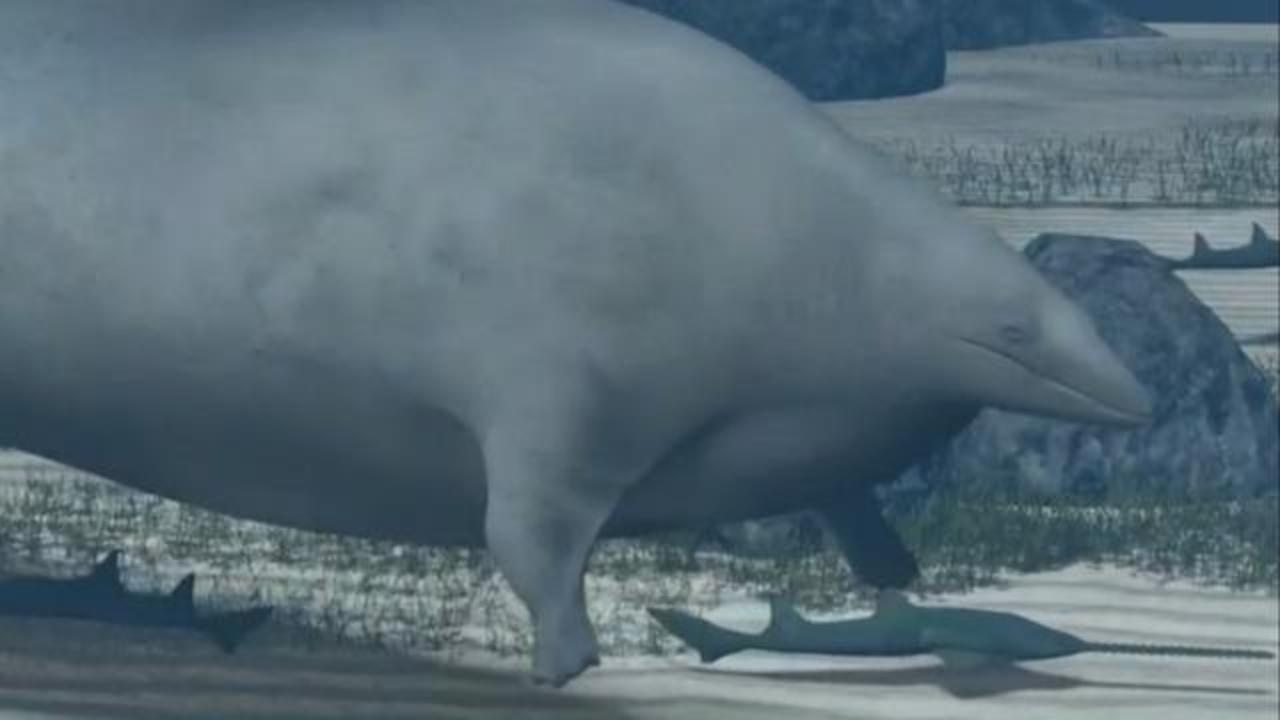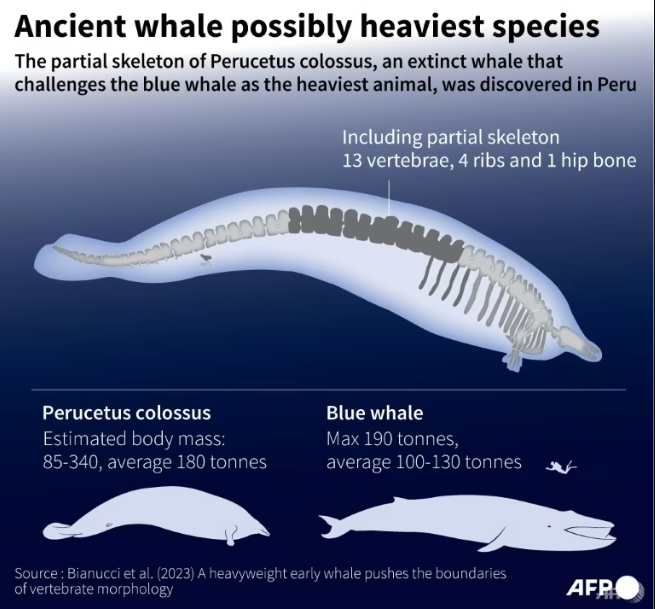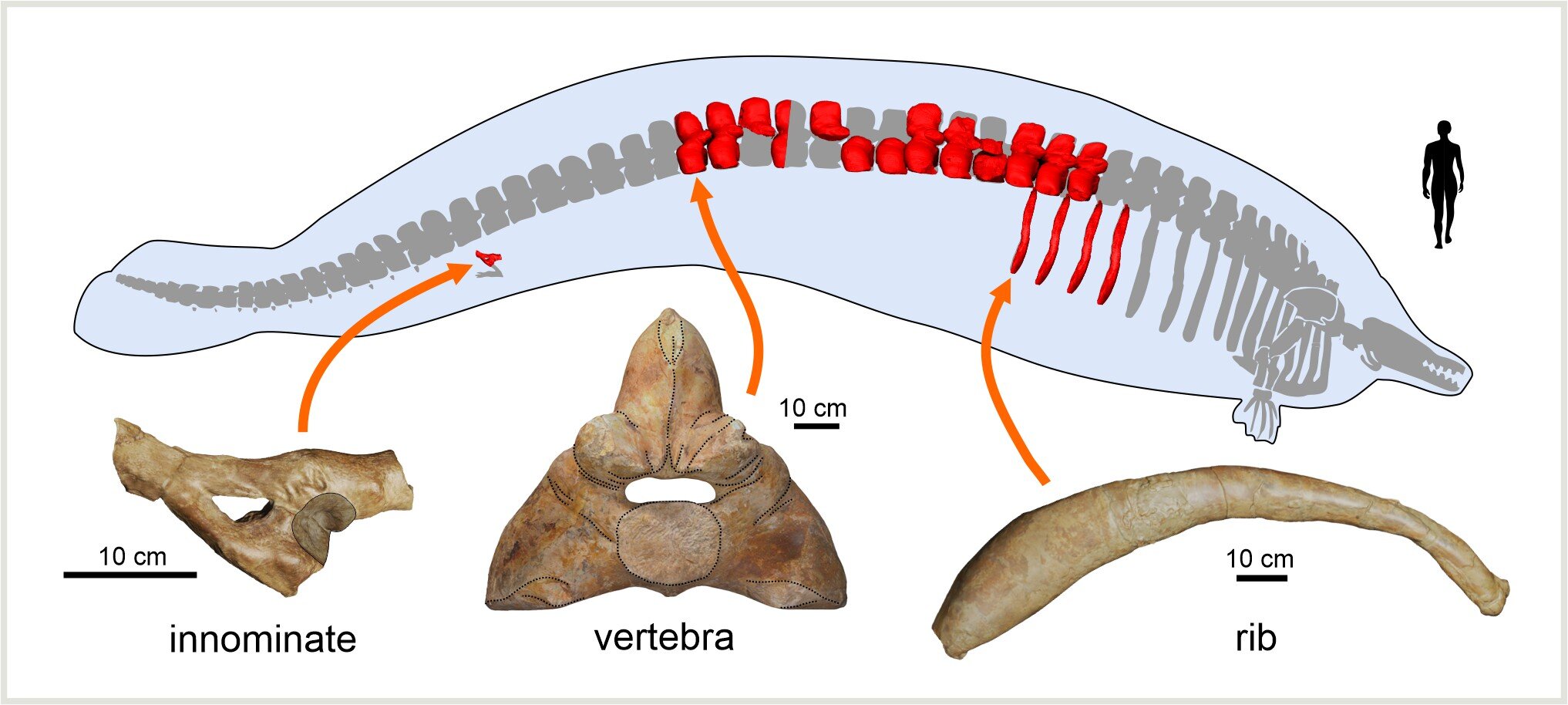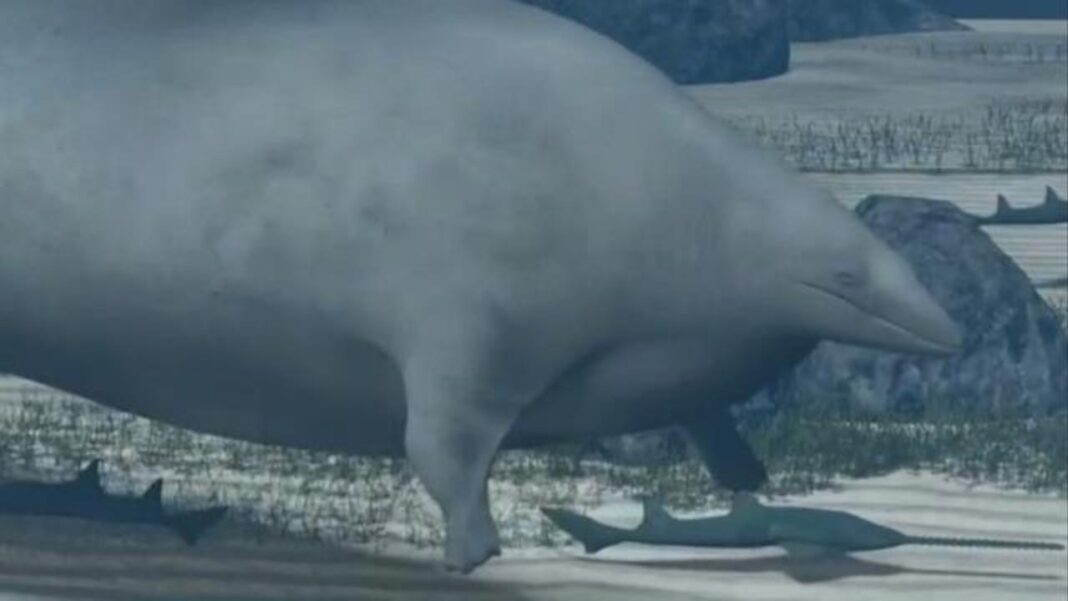A recently found species that is a contender for the biggest animal ever living on Earth has fossilized bones belonging to an ancient beast that patrolled coastal waters 40 million years ago. In a rock formation in the Ica desert in southern Peru, fossil hunters found remains of the gigantic and long-extinct whale.
According to studies, fully developed people may have weighed hundreds of tonnes. Alberto Collareta, a paleontologist at the University of Pisa who studied the fossils, remarked, “It was very unlike anything I had seen previously.” He asserted that it is the most massive skeleton among mammals, possibly even the heaviest ever found among vertebrates.

Blue whales were previously thought to be the largest-bodied animals, according to popular opinion. Hope’s enormous skeleton is a blue whale, which stands over visitors at the Natural History Museum in London and is more than 25 meters long and 4.5 tons in weight. However, according to the researchers, the new species, which was given the name Perucetus colossus in honor of its place of origin and enormous size, may have become heavier and bigger than the blue whale. The P. colossus skeleton would have weighed more than a 25-meter blue whale skeleton while being only 20 meters long due to its denser bones. They calculated its body weight to be between 85 and 340 tons.

The conclusion was obtained when the researchers compared 13 vertebrae, four ribs, and one hip bone from P. colossus with bones from close whale cousins. Beyond its enormous size, P. colossus appears to have had small, vestigial rear limbs and forelimbs for walking on the seabed. Eli Amson, a specialist in mammal fossils working at the State Museum of Natural History in Stuttgart, stated that the recently discovered animal’s weight, estimated to be around 85 tonnes at the minimum, places it squarely in the same weight range as the blue whale, the largest known creature to date. Perhaps there were a few blue whales that were much larger as a single individual, but perhaps there are also much larger individuals in this new species.
The fossils were found 13 years ago, but it took years to prepare them for research, according to a paper by Collareta and colleagues published in the journal Nature. P. colossus had larger bones and was presumably a slow-swimming scavenger, as opposed to other whales, who have relatively light skeletons and can feed on moving fish and other marine organisms. Amson said that whereas blue whales and their ancestors are typically found in open-sea environments, the newly discovered animal evolved in shallow coastal waters. She added that the discoveries revealed crucial insights into gigantism in early cetaceans, which include dolphins, whales, and porpoises.

The discovery suggests that cetaceans attained extreme body sizes roughly 30 million years earlier than previously believed, according to Travis Park, a postdoctoral researcher and fellow at the Natural History Museum in London who was not involved in the research.
P. colossus was considerably distinct from any other middle Eocene cetacean previously known because it coexisted with other huge basilosaurids, or prehistoric whales, that were probably more slender, serpentine, and flexible. It “shows us that we still have a lot to learn about what cetaceans were capable of performing before the evolution of the contemporary groups,” Park added.


